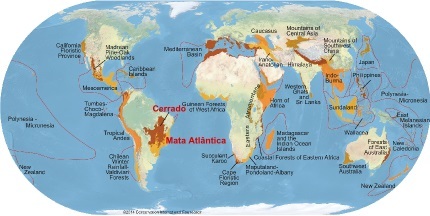The term hotspots is used to designate places that have great natural wealth and high biodiversity, but which, however, are threatened with extinction or are going through a current process of degradation. These are the places on the planet where the conservation of their natural features is most urgent.
The creation of the concept of hotspots arose from a need, the result of the following recurrent problematization among ecologists: with so many natural areas existing on the planet, which would be the points of greatest diversity threatened with extinction and which need to be most urgently conserved?
Faced with this question, the English ecologist Norman Myers elaborated, in 1988, an answer based on the elaboration of the concept of hotspots, which would be precisely these richer areas that have urgency in terms of public policies to be preserved. Myers carried out his studies and listed a series of regions that fit these characteristics, using the following composition as a criterion:
areas with 1500 endemic species (those that only exist in the region in question) and that have already lost ¾ of their original vegetation.Initially, only ten regions of the planet fit the aforementioned definition, with greater emphasis on tropical forests, which includes, in this case, the Atlantic forest Brazilian biome, a biome deeply affected by the occupation of geographic space and which has most of its original devastated parts.
Later, in the 1990s, a more refined study by researcher Russell Mittermeier deepened the knowledge about the planet's natural areas and allowed the reclassification of the number of existing hotspots on the planet from 10 to 25. In 2005, the NGO Environmental Conservation conducted a survey that increased the number of global hotspots to 34, including the region of thick. So the number of brazilian hotspots increased to two.
The synthesis of the studies carried out by the aforementioned NGO can be seen on the map below:

Map prepared by Conservation International with global hotspots
Currently, there is a lot of pressure on governmental and non-governmental environmental organizations for the hotspots to be preserved. However, its areas are continually threatened by the expansion of human activities, such as deforestation, fires, pollution, illegal hunting and others. The biggest issues involve habitat destruction, the extinction of animal species, the introduction of exotic species and the impacts of regional and global climate change.
Image credits: Conservation International / Wikimedia Commons
By Me. Rodolfo Alves Pena

